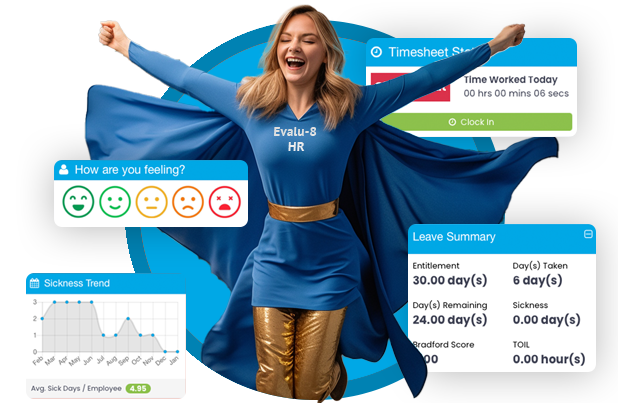Flextime, also known as flexible working hours, is a working arrangement that allows employees to choose their work schedule within certain limits set by their employer. This arrangement is becoming increasingly popular in various sectors as it offers a balance between work and personal life, enhancing employee satisfaction and productivity.
This glossary entry will delve into the concept of flextime, its origins, benefits, drawbacks, and its role in shaping modern working patterns. By the end of this comprehensive guide, you should have a thorough understanding of what flextime means and how it impacts the world of work.
Origins of Flextime
The concept of flextime originated in Germany in the early 1960s as a solution to traffic congestion. The idea was to stagger the working hours of employees to reduce peak hour traffic. The concept quickly gained traction and was adopted by various countries, including the UK, where it was seen as a way to accommodate the needs of working parents and carers.
Since then, the concept of flextime has evolved and is now seen as a key element in promoting work-life balance and enhancing employee productivity. It is also seen as a tool for attracting and retaining talent, particularly in industries where competition for skilled workers is high.
Adoption of Flextime in the UK
In the UK, the adoption of flextime has been driven by legislation and societal changes. The Employment Rights Act 1996 and the Work and Families Act 2006 gave employees the right to request flexible working arrangements, including flextime. This legislation, coupled with changing societal attitudes towards work-life balance, has led to a significant increase in the use of flextime.
According to the Chartered Institute of Personnel and Development (CIPD), over half of UK organisations offer some form of flexible working, including flextime. This trend is expected to continue as more employers recognise the benefits of flexible working arrangements.
Understanding Flextime
Flextime is a flexible working arrangement that allows employees to choose their start and finish times, within certain limits set by their employer. The core concept of flextime is the ‘core time’ – a set period during the day when all employees must be at work. Outside of this core time, employees can choose when they start and finish work.
For example, an employer may set a core time from 10 am to 4 pm, and allow employees to start work anytime between 7 am and 10 am, and finish work anytime between 4 pm and 7 pm. This flexibility allows employees to balance their work and personal life, and can lead to increased job satisfaction and productivity.
Types of Flextime
There are several types of flextime arrangements, each with its own set of rules and benefits. The most common types of flextime include ‘compressed workweek’, ‘flexible daily hours’, ‘flexible lunch’, and ‘flexible days off’.
The ‘compressed workweek’ arrangement allows employees to work their full weekly hours over fewer days, while ‘flexible daily hours’ allows employees to vary their start and finish times each day. ‘Flexible lunch’ allows employees to take their lunch break at a time that suits them, and ‘flexible days off’ allows employees to choose their days off, within certain limits.
Benefits of Flextime
Flextime offers a range of benefits for both employers and employees. For employers, flextime can lead to increased productivity, reduced absenteeism, and improved employee retention. For employees, flextime can enhance work-life balance, reduce commuting time, and provide greater autonomy over their work schedule.
Research has shown that employees who have control over their work schedule report higher job satisfaction, better physical and mental health, and lower levels of work-related stress. Flextime can also help to attract and retain talent, particularly among younger workers who value work-life balance.
Benefits for Employers
For employers, one of the key benefits of flextime is increased productivity. By allowing employees to work when they are most productive, employers can maximise output and efficiency. Flextime can also reduce absenteeism, as employees are able to schedule their work around personal commitments, reducing the need for time off.
Another benefit for employers is improved employee retention. By offering flexible working arrangements, employers can attract and retain talent, reducing the costs associated with employee turnover. Flextime can also enhance an organisation’s reputation as a progressive and flexible employer, which can help to attract top talent.
Benefits for Employees
For employees, the benefits of flextime are primarily related to work-life balance. By allowing employees to choose their start and finish times, flextime can help to accommodate personal commitments, such as childcare or eldercare, reducing stress and improving job satisfaction.
Flextime can also reduce commuting time, as employees can avoid peak hour traffic by starting and finishing work at off-peak times. This can lead to significant time savings, particularly for employees who live in congested urban areas. Finally, flextime can provide employees with greater autonomy over their work schedule, which can enhance job satisfaction and motivation.
Drawbacks of Flextime
Despite its many benefits, flextime also has potential drawbacks. For employers, managing a workforce with varied start and finish times can be challenging. There may also be concerns about reduced oversight and potential abuse of the system. For employees, flextime can lead to longer working hours and blurred boundaries between work and personal life.
It’s important for both employers and employees to be aware of these potential drawbacks and to implement strategies to mitigate them. This may include clear communication about expectations, regular reviews of working arrangements, and support for employees to manage their work-life balance.
Challenges for Employers
For employers, one of the main challenges of flextime is managing a workforce with varied start and finish times. This can make scheduling meetings and coordinating team projects more difficult. There may also be concerns about reduced oversight, particularly for employees who choose to start and finish work at times when their manager is not present.
Another challenge for employers is the potential for abuse of the system. While most employees use flextime responsibly, there is always the risk that some employees may take advantage of the flexibility to reduce their working hours without reducing their workload. To mitigate this risk, employers may need to implement systems to monitor employee performance and productivity.
Challenges for Employees
For employees, one of the main challenges of flextime is the potential for longer working hours. While flextime allows employees to choose their start and finish times, it can also lead to a ‘work creep’, where work extends into personal time. This can blur the boundaries between work and personal life, leading to stress and burnout.
Another challenge for employees is the potential for isolation. If employees choose to start and finish work at times when their colleagues are not present, they may miss out on social interaction and team bonding. To mitigate this risk, employees may need to balance their desire for flexibility with the need for social interaction and team cohesion.
Flextime in the Future
The future of flextime looks promising, with more employers recognising the benefits of flexible working arrangements. Advances in technology are making it easier for employees to work remotely and flexibly, and societal attitudes towards work-life balance are shifting in favour of flexibility.
However, the successful implementation of flextime requires careful planning and management. Employers need to set clear expectations, monitor performance, and provide support for employees to manage their work-life balance. Employees, on the other hand, need to use flextime responsibly and balance their desire for flexibility with the needs of their job and their team.
Technological Advances and Flextime
Advances in technology are making it easier for employees to work flexibly. Cloud-based software, video conferencing, and mobile devices allow employees to work from anywhere, at any time. This technology is making it easier for employers to offer flextime, and for employees to take advantage of it.
However, technology also presents challenges. The ubiquity of mobile devices and the ability to work from anywhere can blur the boundaries between work and personal life, leading to ‘work creep’. Employers and employees need to be aware of this risk and implement strategies to manage it.
Societal Attitudes and Flextime
Societal attitudes towards work-life balance are shifting in favour of flexibility. More people are seeking a balance between their work and personal life, and are looking for employers who can offer flexible working arrangements. This shift in attitudes is driving the adoption of flextime and other flexible working arrangements.
However, societal attitudes towards work-life balance vary across cultures and generations. Employers need to be aware of these differences and offer flexible working arrangements that meet the needs of their diverse workforce.
Conclusion
Flextime is a flexible working arrangement that allows employees to choose their start and finish times, within certain limits set by their employer. It offers a range of benefits for both employers and employees, including increased productivity, reduced absenteeism, improved work-life balance, and greater autonomy over work schedules.
However, flextime also has potential drawbacks, including management challenges, potential abuse of the system, longer working hours, and blurred boundaries between work and personal life. Both employers and employees need to be aware of these potential drawbacks and implement strategies to mitigate them.
The future of flextime looks promising, with advances in technology making it easier for employees to work flexibly, and societal attitudes shifting in favour of work-life balance. However, the successful implementation of flextime requires careful planning and management, and a balance between flexibility and the needs of the job and the team.
In conclusion, flextime is a powerful tool for promoting work-life balance and enhancing productivity. However, like any tool, it needs to be used responsibly and with care. With the right approach, flextime can benefit both employers and employees, and shape the future of work.
See the quick demo now
Before we show you the quick demo, we need to make sure you are a real person.



